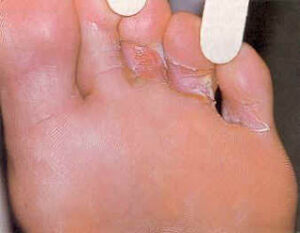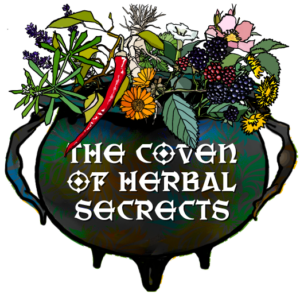We’re sure most people have had some form of a fungal infection in their lifetime. They’re more common than you think! Moreover because modern diets of high sugar and carbohydrates are prime contributors to damaging gut health. Throw the overuse of over-the-counter pharmaceuticals and antibiotics into your body and you have the ideal breeding ground for weakening the immune system and giving rise to fungal infections. Here are our favourite 3 natural remedies to fight common fungal infections.
What are fungal infections?
There are a range of reasons that cause fungal infections. Anything from a warm climate to lack of hygiene can influence the spread of fungal growth. It usually affects skin, hair, nails and even lung health in terms of invading layers of skin, breaking hair and discolouring nails.
Fungal infections are also known as mycosis. Before we get to herbal treatment of fungal infections and how best to choose which herbs to reach for and how to apply them, let’s look at what fungal infections actually are.
The word microbe, is a blanket term for microscopic and usually single-celled organisms. These include (but not exclusively) fungi, viruses, bacteria and protozoa. However, fungi can be more complex than viruses and bacteria, more akin to animals in their structure. As humans, we are more distantly related to fungi than we are even to the plant world.
Fungal infections in humans can range from common, more mild infections such as athlete’s foot and thrush (both vaginal and oral) to serious life-threatening diseases such as aspergillosis.
Common Fungal Infections
Candida:
 The yeast Candida albicans can live on the skin, inside the body in the mouth, throat, gut, vagina, without causing any issue. Candida albicans is able to over grow in certain situations causing superficial mild candidiasis, such as oral or vaginal thrush (yeast infection). Symptoms of which can include: itching and irritation in the vagina and vulva; a burning sensation, especially during intercourse or while urinating
The yeast Candida albicans can live on the skin, inside the body in the mouth, throat, gut, vagina, without causing any issue. Candida albicans is able to over grow in certain situations causing superficial mild candidiasis, such as oral or vaginal thrush (yeast infection). Symptoms of which can include: itching and irritation in the vagina and vulva; a burning sensation, especially during intercourse or while urinating
Athlete’s foot (Tinea pedis):
This is a fungal skin infection that usually begins between the toes. It is more common where there have been very sweaty shoes worn regularly or non-breathable footwear. Signs and symptoms of athlete’s foot include an itchy, scaly rash. The condition is contagious and can be spread via contaminated floors, towels or clothing.
Toe and fingernail fungal infection (Onychomycosis):
This stems from the same organisms as athletes foot but often needs more time than athletes foot to shift.
Ringworm or Tinea:
A common fungal skin infection that often looks like a circular rash. Ringworm is a misleading term as no worms are involved. Tinea is a contagious fungal skin infection. A group of fungi called dermatophytes that live off of skin, hair and nail cells (dermatophytes) cause ringworm Which is also known as Tinea.
Treatment approaches of fungal infections
Luckily, fungus mutates more slowly than bacteria so they tend not to become resistant to targeted treatments. However, as we see from the possible causes of fungal overgrowth or infection, just using so-called anti-fungal herbs will not provide a more holistic approach that needs to consider the immune system, nervous systems or the digestive system.
There are different herbs that can be reached for depending on the location, fungal type and severity of the situation.
Consider your diet in the treatment of fungal infections. A high sugar, white carbs diet will encourage fungal growth while fresh green juices (not sweet juices and smoothies) will provide vital nutrients for the body to maintain optimum health.
Anti-fungal natural remedies for common fungal infections
While there will be a holistic approach with herb choices whether focusing on supporting the immune system, nerves, digestion, anti-fungal herbs will help to reduce the overgrowth of fungus and subsequently reduce the symptoms.
Anti-fungal herbs work in a number of ways, either by disrupting the synthesis of the fungus by binding to the proteins in the cells, or by utilising enzymes to cause damage to the fungal cells.
One huge positive of herbal anti-fungals is that they have shown to cause no resistance developing in subsequent fungal growth.
Let’s look 3 natural remedies to fight common fungal infections:
1. Garlic
Allicin is a compound found in garlic that has become the most well known. Touted as the main medicinal compound in garlic but of course there are several compounds acting together to create the plethora of actions this amazing herb offers from anti-parasitic, anti-inflammatory, blood thinning anti-lipidemic (reducing lipids/fat deposits in the blood).
there are several compounds acting together to create the plethora of actions this amazing herb offers from anti-parasitic, anti-inflammatory, blood thinning anti-lipidemic (reducing lipids/fat deposits in the blood).
Allicin is produced by crushing of the garlic and is broken down by the enzyme alliinase on crushing. Once active, the allicin becomes extremely anti-fungal. Allicin produced, has also been shown to cause 100% mycelial growth inhibition of Aspergillus niger, that fungi found in the environment that can lodge and reproduce in the lungs.
2. Calendula
Calendula cream has been shown to provide longer lasting relief in vaginal thrush than conventional creams such as clotrimazole. Although the preparation takes a little longer to take effect, the results are longer lasting. Vaginal thrush can be both extremely uncomfortable and problematic, and can interfere with sexual relations as well as psychological issues in long-term or repeated bouts of ‘thrush’. The candida albicans can become resistant to the pharmaceutical preparation too, but not with calendula ointment.
Calendula 90% can be added to other tincture to be taken internally but is too high in alcohol to be taken on its own. We often add it to a mix of tinctures to use diluted in water as an aid for oral candida overgrowth.
3. Thyme

Thyme is an easy to grow garden herb that can be used as a tea to gargle with for oral thrush, or as part of a wash with other herbs. As an excellent lung herb if there is any suspected inhalation of fungal spores (e.g. when working to treat mould on the walls in the home), thyme tea could be extremely useful. Thyme essential oil has had lots of research into its antifungal properties and is one that we dilute in a little vodka before putting in a spray bottle with water to spray on problem areas in the home.
Dealing with infections isn’t necessarily fun but they won’t go away on their own! To heal fungal growth without the use of expensive and ineffective medicine, these antifungal natural remedies for common fungal infections will do the job, plus they’re completely accessible to all!
Would you love to study herbs but don’t know how to make the time?
Join our Coven for fresh content regularly uploaded, webinars, Q&A sessions and so much more!
With yours truly, The Seed Sistas
Plants are calling YOU






